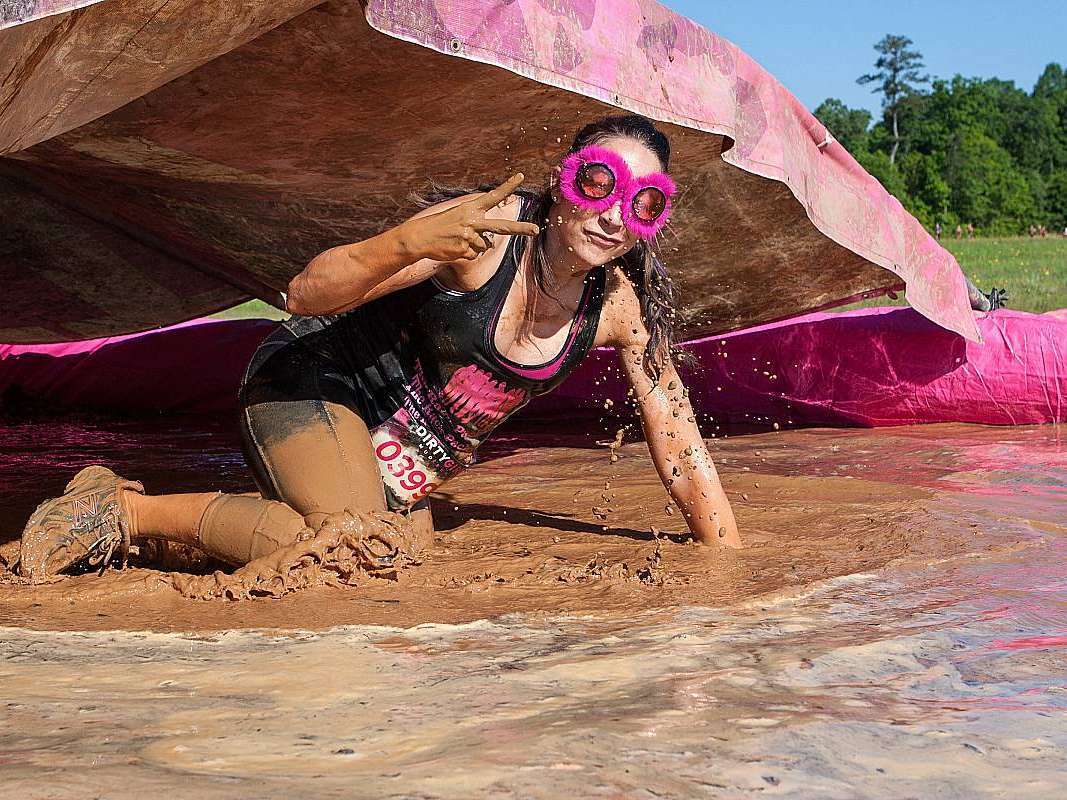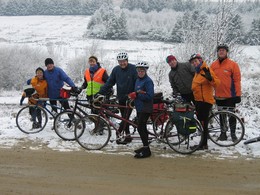 Let’s say you are one of those tri newbies who started getting into the sport of triathlon last spring.
Let’s say you are one of those tri newbies who started getting into the sport of triathlon last spring.
You did your open water swimming and hit the roads biking and running in the warm summer sun. You succeeded in completing your first triathlon, and now it’s on to bigger and better things in your triathlon goals.
But now the cooler fall temperatures have arrived, daytime hours are shortening, and winter is just around the corner. Perhaps your mindset on cycling is to hang your bike up in the garage for the winter, and start doing spin classes at the YMCA.
With the proper cold weather cycling gear, there’s no reason why you can’t continue outdoor bike training during the cold weather months.
Cold Weather Cycling Options
First, let me make the case for cycling throughout the winter.
An indoor spin bike is not the same as riding your road bike, and a spin class can never replicate the dynamics of outdoors road biking. That’s not to say that spin bikes and classes don’t have their place; they do. But you can’t expect spinning to suffice as your bike training.
The world is filled with people (including me) who did regular spin workouts at the YMCA and then went out and bought a road bike, and was shocked to discover how different and more difficult it was.
Given the fact that sometimes winter weather doesn’t make outdoor riding possible, an indoor trainer or roller is the next best thing to biking outdoors. Why? It is because the trainer or roller keeps you on your bike.
So, for indoor bike training, ranking the options would go as follows:
1. Trainer or roller: they keep you on your bike
2. Spin bike: designed to be as comparable as possible to a road bike
3. Regular indoor exercise bike: better than nothing but not desirable
Obstacles To Training Outdoors
Continuing to train outdoors on your bike during cold weather months will require overcoming a few mental hurdles.
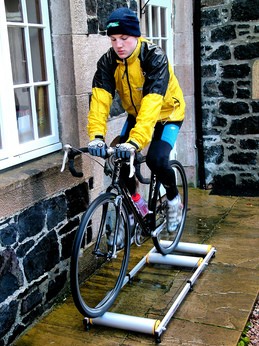 Here are some of the most common objections:
Here are some of the most common objections:
- Biking outdoors when it is cold is not pleasant.
Do you snow ski or know of people who do? Do you or others view snow skiing as unpleasant? Of course not! There are all kinds of things we enjoy doing outside during winter, and cycling can be one of them. - It’s virtually impossible to stay warm when biking in the winter.
Contrary to popular belief, the biggest problem with most winter cycling is not keeping warm. The hard part is keeping cool. Cycling in any weather generates a great deal of excess heat. The first mistake of newbie winter cyclists is to dress too warmly. Dressing so as to get rid of excess heat and sweat is the significant learning curve to master for enjoyable winter cycling. Generally, it’s mostly when temperatures dip to below zero that being warm enough requires more extraordinary measures. Some winter cyclists are known to keep on riding through -20 temps. - Winter cycling is dangerous.
Icebike conducted a survey of winter cyclists. One of the questions asked about the worst accident that respondents had experienced while cycling in winter. The results were surprising. Only slightly over 4% had ever required medical attention for a winter cycling accident. 70% had never been injured at all! Not so much as a sprain. One of the most significant safety-related measures for winter cycling is to be sure you have adequate reflective apparel and bike lights. With a decreasing number of daylight hours, you want to make sure you are easily visible to motorists on the road. - There is no value added by cycling outdoors in the winter.
As stated earlier, continuing to train on your bike in outdoor conditions is the optimal way for a triathlete to do their cycling training. Over time, however, your reasons are likely to be the sheer enjoyment of it. The air is fresh and clear, it is usually drier in the dead of winter which keeps your bike cleaner. Riding in falling snow is quiet and peaceful. Pushing your way through 6 inches of heavy wet snow is some of the most challenging cycling you will ever do, comparable to climbing a steep hill. It can be grueling, but you never knew working that hard could be so much fun!
Cycling Gear Necessary For Winter Training
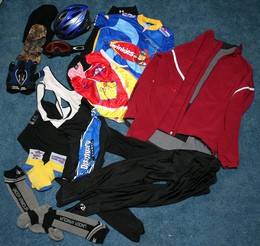 Keeping you outdoors biking during cold weather is also matter of having the right gear.
Keeping you outdoors biking during cold weather is also matter of having the right gear.
It’s not about packing on endless layers, but having gear with the right technology to keep you dry and warm but not over heated.
In the fall season — when temperatures are cooler (40’s and 50’s) but warm up us as the day progresses requires — you’ll need different gear than the cold temperatures (30’s and below) that remain constant during the typical winter day.
Here’s a basic cycling clothing temperature guide to help you determine what to wear.
What triathletes most complain about when cycling in winter weather is cold head, hands, and feet.
Here is a checklist of cold weather cycling gear you will want to invest in:
![]() Arm and Leg Warmers
Arm and Leg Warmers
During the fall and mild winter temperatures, the arm and leg warmers are helpful because you can pull them off when you warm up. For example, you are doing a 40-mile ride. The arm and leg warmers help during the first hour, but then the temps rise and your body heat increases. So you shed the warmers, and stick them in your jersey pocket or in your saddle bag.
![]() Long-Sleeve Base Layer
Long-Sleeve Base Layer
The long-sleeve base layer is meant to keep you dry and warm during cold weather cycling training.
![]() Long-Sleeve Jersey
Long-Sleeve Jersey
Remember, you want your long-sleeve jersey to fit snug so it doesn’t flap in the wind.
![]() Long-Leg Bibs
Long-Leg Bibs
In colder temperatures when warmth is a concern for the duration of your ride, you’ll want to wear cycling bibs with long legs. The other way to achieve the same effect would be to pull some cold weather tights over bib shorts or cycling shorts.
![]() Vest and Jacket
Vest and Jacket
In the fall, wearing a cycling vest to keep your core warm will suffice. As season temperatures drop, you will want to wear a long-sleeve cycling jacket.
![]() Shoe Covers and Booties
Shoe Covers and Booties
In the cooler temps of an early morning ride in the fall, you will want to slip shoe covers over the top of your cycling shoes to keep your feet warm. As winter sets in, you will want to begin using shoe booties.
![]() Gloves
Gloves
If you’re thinking your fingerless warm weather cycling gloves with work; think again. It’s about the fingers! You’ll need winter cycling gloves.
![]() Headwear
Headwear
A helmet liner works well in mildly cold temperatures. Ear covers also serve a similar purpose for people who often feel overheated in the head area but want to avoid cold ears on cold-weather rides. For extreme cold conditions, you will likely want a cycling mask.
![]() Socks
Socks
Like your hands, your feet are another extremity of your body that is more susceptible to cold temperatures. Having a good pair of winter cycling socks makes a big difference.
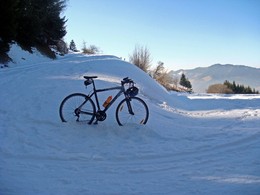 Shop around online, and at your local bike shop to find the proper and affordable winter riding gear.
Shop around online, and at your local bike shop to find the proper and affordable winter riding gear.
As always, don’t forget your need for hydration and nutrition during cold weather outdoor cycling.
Heck, you might just get into this outdoor winter training to the extent that you might want to take up the sport of winter triathlon!


